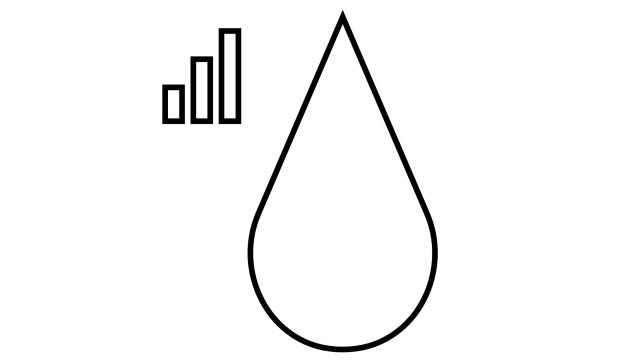Understanding Your Rates
Multiple factors influence and determine your water rates, such as tier allowance and/or season. There are no fixed monthly charges except for private fire service.
To view total water tier rates as shown on your bill, go to one of the following:
Single-Dwelling Unit Rate
Schedule A: LADWP's water rates for single family residential customers expanded from a two tier rate to a four tier rate effective April 15, 2016.
Multi-Family Residential Rates
Schedule B: For apartment owners - Applies to two (2) or more dwelling units served by one meter.
Commercial Rates
Schedule C: For commercial, industrial, governmental, temporary construction, and any other water service for which no rate schedule is specified
Other Water Rates
Schedule D: Recycled Water Service
Schedule E: Private Fire Service
Schedule F: Publicly Sponsored Irrigation, Recreational, Agricultural, Horticultural, and Floricultural Uses, and Youth Sports
What are tiers?
Your monthly usage is divided into two tiers and each tier has its own corresponding price. This two tier system is used to encourage customers to conserve water.
Your Tier 1 allotment is based on the highest percentage of your maximum daily average consumption of either (1) your adjusted shortage year calculations from fiscal years of 2007, 2008, 2009 or from (2) your December 2014 through March 2015 consumption. During the summer months, your first tier block will be your maximum daily average multiplied by 105% and the number of days in your current bill. In the winter months, your maximum daily average will be multiplied by the number of days in your current bill.
If you are a new customer, or if you do not have an established first tier usage block, you will be billed at the Tier 1 rate until after April 2017, and after a first tier usage block can be calculated from your prior years's December through March consumption.
All tiers include pass-through adjustment factors for water supply cost, water quality improvement, Owens Valley regulatory, low-income subsidy, base rate revenue target, water infrastructure, and water expense stabilization.
Tier Allowance
The formula for determining tier usage blocks varies with customer class.
Single-Dwelling Unit Residential Customers (Schedule A) have a four tiered rate structure. The first tier covers basic indoor water needs. All customers will receive eight (8) HCF for Tier 1 usage. Tier 2 and Tier 3 are based on lot size (five categories), temperature zone (three zones), and season (summer and winter). Usage above Tier 3 allotments will be charged at Tier 4 rates. Single family residential customers can find out their tier allotments by viewing LADWP Water Rates Schedule A Allotments (Bimonthly) or calling 1-800-DIAL-DWP (1-800-342-5397).
For Multi-Dwelling Unit Residential Customers (Schedule B) and Commercial, Industrial, and Governmental Customers and Temporary Construction (Schedule C), the Tier 1 allotment is based on the highest percentage of the customer’s maximum daily average of either (1) adjusted shortage year calculations from fiscal years 2007, 2008, 2009 or from (2) December 2014 through March 2015. Customers can find out their tier allotments by calling 1-800-DIAL-DWP (1-800-342-5397).
Your rate is based on the following criteria:
•Season: High season (June – September) or Low season (October– May)
•Consumption: Amount of water used in each tier
If your billing read dates cross over from low season to high season, or from high to low, your tiers and consumption will be prorated based on the number of billing days in each season.
For Multi-Dwelling Unit Residential Customers (Schedule B) and Commercial, Industrial, and Governmental Customers and Temporary Construction (Schedule C), the Tier 1 allotment is based on the highest percentage of the customer’s maximum daily average of either (1) adjusted shortage year calculations from fiscal years 2007, 2008, 2009 or from (2) December 2014 through March 2015. Customers can find out their tier allotments by calling 1-800-DIAL-DWP (1-800-342-5397).
The Water System’s rate ordinance contains General Provisions or pass-through factors that recover costs related to water supply, water quality, Owens Valley regulatory, low-income subsidies, base rate revenue target adjustments, water infrastructure, and water expense stabilization.
•Water Supply Cost Adjustment – Covers the cost of Los Angeles Aqueduct water, purchased water, groundwater, water conservation, recycled water, and any additional water supply source expenses. The rate for the water supply adjustment varies according to the tiers and is based on the cost to purchase water from various sources.
•Water Quality Improvement Adjustment – Recovers expenditures to equalize water quality throughout the city or to meet State and Federal water quality standards.
•Owens Valley Regulatory Adjustment – Recovers expenditures to operate and maintain infrastructure and related facilities for the Owens Lake Dust Mitigation Project, the Owens Lake Master Project, and the Lower Owens River Project.
•Low-Income Subsidy Adjustment – Recovers the cost of credits provided to lifeline and low-income customers.
•Base Rate Revenue Target Adjustment – Recovers any shortage in base rate revenue due to variations between projected and actual water sales.
•Water Infrastructure Adjustment – Recovers capital costs associated with infrastructure investments to maintain and improve the reliability of the water distribution system.
•Water Expense Stabilization Adjustment – Provides a balance account in order to stabilize rates in an unforeseen event impacting water service delivery, such as an earthquake or a major weather event.
General provisions for water supply cost, water quality improvement, low-income subsidy, and Owens Valley regulatory are calculated twice a year on January 1 and July 1. Base rate revenue target and water expense stabilization are calculated once a year on January 1, and water infrastructure is calculated once a year on July 1. One billing unit equals one hundred cubic feet of water (HCF) and one HCF equals 748 gallons.
Related Programs
Private Water Sub-meter Program
The City’s sub-meter program and a sub-meter can help determine your water usage and save money.

Water Conservation
LADWP Water Conservation program and rebate for residential and commercial customers.
